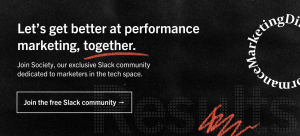What is Direct Marketing?
Direct marketing is a type of marketing campaign whose goal is to initiate a personal relationship between the customer and the marketing organization. In a direct marketing campaign, the marketing organization communicates directly with a pre-selected customer or segment of customers via one or more marketing channels. A key feature of direct marketing is a direct response – organizations that engage in direct marketing must establish the means for customers to respond directly to their marketing efforts, especially with orders and purchase requests.
Direct marketing stands in contrast to traditional advertising mediums that communicate messages on a many-to-one basis. In traditional ad platforms (billboards, print media, broadcast ads, etc.), the marketing organization relies on intermediaries to spread its promotional message to large swaths of consumers, in hopes that some consumers who see the ad will seek out the organization and its products. Direct marketing typically happens directly between the marketing organization and the customer, with no mass messaging and without the use of intermediaries.
Direct vs Indirect Marketing - What's the Difference?
The main difference between direct and indirect marketing is the marketing channels that are used to connect with customers. When we think of marketing channels, there are two types of channels: promotional channels and distribution channels.
Promotional channels include all of the various ways that an organization can communicate with prospective customers about its products and services. Distribution channels describe the methods that an organization uses to deliver its products and services to the customer. When we talk about direct vs indirect marketing, it is important to understand marketing as both the promotion and distribution of goods and services and to realize that these two components may be managed in strategically different ways.
If we’re talking about distributing a product, direct marketing means that the product is being sold directly from the manufacturing organization to the customer without the involvement of agents, warehouses, logistics firms, distribution companies, wholesalers, or retailers.
If we’re talking about promoting a product, direct marketing happens when a marketing organization seeks out promotional channels that communicate directly with customers, including e-mail marketing, direct mail, online selling and other digital channels that support personalized messaging.
Of course, the promotion and distribution of products go hand-in-hand. If you manufacture widgets and you sign a distribution contract with a department store, your product can be marketed through that store’s platform.
You’ll benefit from their shelf space, signage, television and radio commercials and other forms of indirect marketing. In contrast, if you’re a B2B software company marketing a SaaS product, you will necessarily be heavily involved in the distribution of your product to customers. Here, it makes more sense to pursue a direct sales model where you promote and distribute your product directly to customers.

How Does Direct Marketing Work?
As we’ve already stated, there are two components to direct marketing: direct promotion and direct distribution. To successfully implement a direct marketing campaign, an organization must have the infrastructure, data, and processes in place to effectively reach its target customers with personalized messaging and to deliver goods and services to purchasers with a high level of customer service.
Channel selection and development is the first task associated with direct marketing. Marketing organizations must identify marketing channels where they can reach prospective customers directly with information and offers about goods and services. The most popular channels include:
Catalog Distribution
Catalog distribution was one of the earliest techniques associated with direct selling. To serve customers who lived a long way from a physical store, manufacturers and retailers would distribute catalogs through the mail and empower customers to send in mail orders for items they wished to purchase. This meant that rural customers would not have to travel long distances to purchase the product from an intermediary.
Telemarketing
Telemarketing describes a form of direct marketing where the marketing organization contacts prospective buyers by phone. Some countries have a do-not-call list that allows individuals to opt out of unsolicited sales calls, but marketing organizations can still market by phone to customers who have opted-in, or with whom they have an existing relationship.
SMS and Mobile Marketing
Consumers can opt-in to receive direct SMS marketing messages from their preferred brands. Mobile marketing also exists in the form of mobile banner ads, push notifications, QR codes, and other direct channels between the business and the customer.
Digital Marketing Channels
The increasing shift towards digital marketing as a low-cost, high-impact alternative to traditional marketing media has created new and promising direct marketing channels. Organizations that sell informational or software products can effectively distribute their products via the internet, making web-based promotion an effective tool for connecting prospects with a product or service. The most popular digital channels include:
- Email Marketing: Emails are inexpensive to create, design and test, and they allow organizations to communicate directly with existing customers and with prospective customers who may have submitted their contact information or registered for a newsletter or mailing list.
- Pay-per-click (PPC) Advertisement: PPC advertisements on platforms like Google Ads, LinkedIn, and Facebook allow businesses to reach specific market segments with targeted messaging that connects prospects back to the business website where sales and other types of marketing conversions are possible.
- Social Media: Social media websites are effective platforms for direct advertising, as they facilitate direct two-way communication between customers and the business while encouraging engagement and interaction.
- Organic Search Traffic: Organic searchers are users who type queries into Google or Bing and then click on a website from the search engine results pages (SERP). These listings show up underneath the pay-per-click advertisements.
Leverage Direct Marketing through Digital Channels with Directive
Direct marketing is a powerful tool for organizations that wish to sell or distribute their products online. By communicating directly with prospective buyers through digital channels, marketers can take full control of the customer experience, enhance brand loyalty, and collect valuable customer data that can be used to optimize marketing spend and return-on-investment.
At Directive, we apply our proven Customer Generation methodology to leverage direct marketing through digital channels to drive results. We optimize marketing spend and target the most profitable marketing channels to ensure that our customers achieve their revenue targets while increasing marketing efficiency, every time. To find out how, book a call with our expert team of tech marketers and get a custom proposal.

